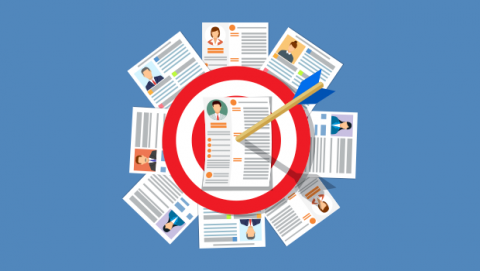Anyone looking for a new role knows that job-hunting is a job in itself. It takes a lot of time to find and apply for the roles that best align with your current and future goals. Then your patience is tested as you wait and hope to get an initial interview.
Well, stop hoping and start hacking – starting with your resume. As the first thing hiring managers and talent scouts see, your resume can make you stand out or fade into a sea of competitors.
With more than 15 years of experience with talent acquisition, I've reviewed more than 20,000 resumes. Here are my five insider tips:
1. Include a mission statement
If you’re unsure about your goal, how can a hiring manager be sure of your experience and what you can bring to the role? The following exercise will help you outline your personal brand, and you can use it in your LinkedIn profile summary. Ask yourself:
- What is my professional mission? What are my goals and my objective?
- What is important to me in my next role?
- What are some of the impressive growth metrics from my previous projects? It’s all about showing your impact. Examples include savings generated, revenue created, customer experience wins, time saved, and process improvements.
- What are my overall accomplishments? Think of at least two for each role. This will also help during the interview process.
[ Also read 8 ways to get out of a career rut. ]
2. Stand out with your personal brand
Utilize your mission statement to create a strong, impactful profile summary. Keep it concise – no longer than 4 or 5 lines – and make sure it is specific to the role you’re applying for.
Address these questions in the summary:
- Who am I?
- Why did I apply for this role?
- Why am I the best person for the new opportunity?
- What additional value and skill sets will I bring to the table?
- What’s been my biggest work accomplishment to date?
- What are my passions and motivations, and how do they align with this prospective employer?
3. Tailor your resume
Tailor your resume to each specific role and company. Your skills and examples of your previous work should align with the role and the culture.
Here’s how to do this:
- Research the company. Check out their website, Glassdoor, job ads, press, and LinkedIn.
- Learn about the company’s mission, motivations, values, and culture.
- Research the company’s employees on LinkedIn and check out the content they are engaged with and are re-sharing. This will provide a deeper look at their culture, diversity, and the professional backgrounds of your potential colleagues. This is also helpful if you meet hiring managers. Finding common interests leads to open conversations. (Of course, do not disclose your detective work!)
- Read the job advertisements. This tells you the most important things an employer wants from candidates. It sets expectations about day-to-day responsibilities and the purpose of the role. Don’t hesitate to incorporate some of the same words from the ad into your resume.
4. Be human
Help the reviewer see beyond your resume. A resume is meant to showcase your professional experience, but there’s much more to a person than their work. Don’t hesitate to include your passion projects. Include things you’re involved with outside your day job, such as charities, hobbies, and personal interests.
5. Keep it brief but impactful
Hiring managers often have hundreds of resumes to review. Place yourself in their shoes: How can you make it easy for them to interpret your achievements and passions? Resumes should preferably be no more than two to three pages max, keeping it digestible for the reader.
[ Check out essential career advice from 37 award-winning CIOs! Get a variety of insights on leadership, strategy, and career development from IT executives at Mayo Clinic, Dow, Aflac, Liberty Mutual, Nordstrom, and more: Ebook: 37 award-winning CIOs share essential IT career advice. ]






